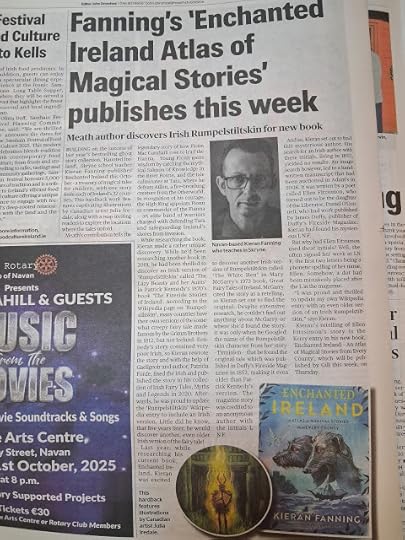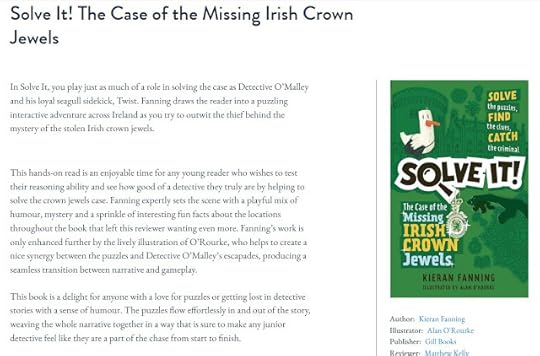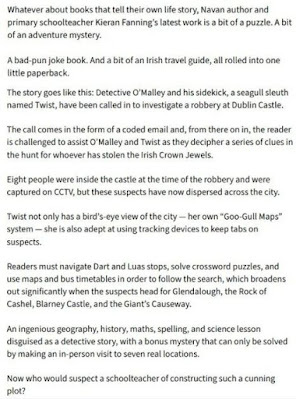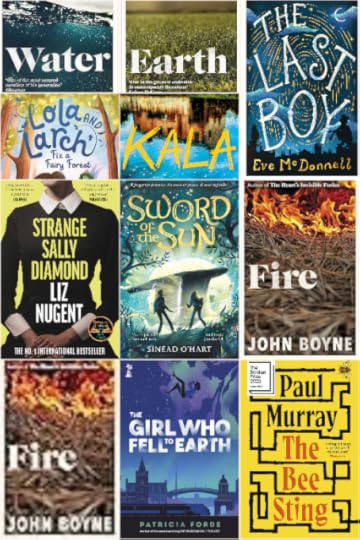Kieran Fanning's Blog
October 8, 2025
Meath Chronicle article about ENCHANTED IRELAND
October 4, 2025
CBI review of SOLVE IT!
September 17, 2025
ENCHANTED IRELAND in CBI's 'The Best Irish Books of 2025'
August 18, 2025
Irish Examiner review of SOLVE IT!
July 15, 2025
Twist Unboxing New Book
I tried to make an unboxing video but the bird took over...
July 7, 2025
BONUS MYSTERY ANSWERS: Solve It! The Case of the Missing Irish Crown Jewels
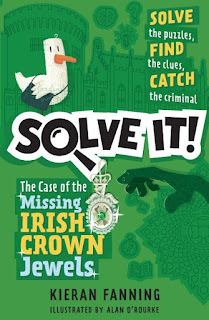 Page 32: H, A, N
Page 32: H, A, NPage 60: A, T, E
Page 69: E, RE, D
Page 84: T, UR
Page 99: G, W
Page 106: J, N, E
Page 120: A, I, R, G
Page 129: S, E
Page 142: B, E, L
April 6, 2025
Is AI a barrier to learning and is it making our students lazy?
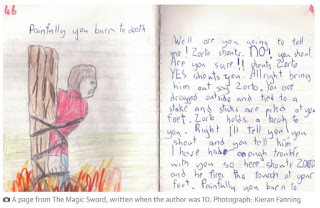 I started getting my students to write their own books inthe late 1990’s. We didn’t have access to
I started getting my students to write their own books inthe late 1990’s. We didn’t have access tocomputers at the time so the bookswere handwritten and hand illustrated, stapled together, much like the books Imade myself, as a kid. They were little gems of wonder, capturing a moment in achild’s life, though I often felt sorry for the kids whose messy handwritingoften ruined the look of their books and prevented other from being able toread them.
This problem was solved at the turn of the millennium withthe arrival of computers into our classroom. Now, we could print pages andstaple them together, and the kid with the messy handwriting could now competeon a level playing field.
The internet came next, and with it, came Print-On-Demandpublishers. No longer did we have to staple pages together. Now, for a smallcost, we could publish books that looked like the real thing! It has, perhaps,been the greatest and most positive change in our little book writing projectover the past 25 years.
So, computers and the internet have, in my opinion,revolutionised our classroom book-writing project.
As I was editing this year’s crop of books, I came across abook that clearly wasn’t the work of a child. Now, in the past, children wouldhave asked parents to help or they might have robbed a few lines from theinternet, but at least some of the work would have been their own. The book I referto, however, was so well written and without mistakes, that I becamesuspicious. When I put the text into an AI checker, the results were that thebook was almost 100% written by AI.
Of course, I will not share this discovery with the studentwho handed in the book, but I wonder if AI is a step too far in technology?Will it be a barrier to learning and will it make our students lazy and dumb?
The book I refer to above was a non-fiction book, so byemploying AI to do the work, the student has missed out on the writing,researching and summarising skills I was hoping they would learn by writingtheir own book.
And yes, I realise how tempting the AI tool is. In fact, I’vehad to force myself to resist the temptation to use it for report writing and thecreation of comprehension activities in the classroom.
What did the child, above, learn from writing their book?Very little, in my opinion, other than how to cheat and be lazy.
What do you think? Is AI a step too far in our digitalevolution?
February 21, 2025
Help me choose a book cover
I've been playing around with some book cover designs for a Middle Grade (ages 8-12) adventure. Which one do you like best?
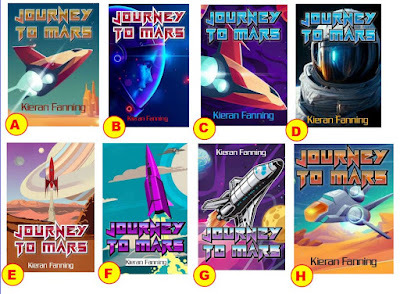
December 18, 2024
My Favourite Reads of 2024
October 29, 2024
On the Trail of an Irish Rumpelstiltskin
I've always been a fan of the somewhat creepy fairy tale, Rumplestiltskin, which was published by the Grimm brothers in 1812. When I was researching my 'Irish Fairy Tales, Myths and Legends' book for Scholastic, I came across folklorist, Patrick Kennedy's story 'The Lazy Beauty and her Aunts' in his 1870's book 'The Fireside Stories of Ireland.' an irish version of Rumpelstiltskin! I couldn't believe it.
I set about retelling it and employed the services of writer and Gaeilgoir, Patricia Forde, to correct the rather poor Irish in the story. I wrote, what I hoped was an improved version of Kennedy's story and was deligted to update the Rumpelstilskin Wikipedia page (my first time to ever do this!) to include an irish version of the story.

I felt quite proud of myself and left Rumplestilskin behind, thinking that the matter had been dealt with.
This year, however, while researching a new book, I came across another Irish version of the tale called 'The White Hen' in Mary McGarry's 1973 book, 'Great Fairy Tales of Ireland.'
 McGarry cites the story as a retelling, so I set out to find the original. Despite extensive research, I couldn't find out anything about Mary McGarry or where she had found the story. It was only when I Googled the name of the Rumpelstiltskin charcter in her story (Tirminion) that I found the original tale which was published in Duffy's Fireside Magazine in November 1852. This made it even older than Patrick Kennedy's version! I would have to update the Wikipedia entry again.
McGarry cites the story as a retelling, so I set out to find the original. Despite extensive research, I couldn't find out anything about Mary McGarry or where she had found the story. It was only when I Googled the name of the Rumpelstiltskin charcter in her story (Tirminion) that I found the original tale which was published in Duffy's Fireside Magazine in November 1852. This made it even older than Patrick Kennedy's version! I would have to update the Wikipedia entry again.
The magazine story was credited to an anonymous author with the initials, L. N. F.
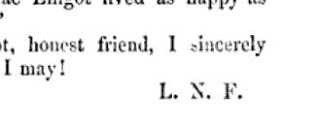 And so, I set out to find this mysterious author. My searches for an author with these initials who would have been living in Ireland in 1852 yielded no results. An image seach however, led me to a handwitten manuscript that had been auctioned by Adam's in 2008. It was written by a poet called Ellen Fitzsimon, who turned out to be the daughter of the Liberator, Danial O' Connell. I also learned James Duffy (publisher of Duffy's Fireside Magazine) had published some of her work.
And so, I set out to find this mysterious author. My searches for an author with these initials who would have been living in Ireland in 1852 yielded no results. An image seach however, led me to a handwitten manuscript that had been auctioned by Adam's in 2008. It was written by a poet called Ellen Fitzsimon, who turned out to be the daughter of the Liberator, Danial O' Connell. I also learned James Duffy (publisher of Duffy's Fireside Magazine) had published some of her work. I had found my L.N. F.
But why had Ellen Fitzsimon used these initials? Well, she often signed her work as LN. F, the first two letters being a phonetic spelling of her name Ellen. Somehow, a dot had mistakenly placed after the L in the magazine.
I have updated the Rumpelstiltskin Wikipedia entry to include my discovery.

I used to be sceptical about Wikipedia but if the people who edit it are as obsessive as me, then it is perhaps the best enclopedia out there!
My findings may not have been of the magnitude of last week's discovery of an unseen Bram Stoker manuscript, but to me, it felt as special.
Hopefully, my own retelling of Ellen Fitzsimon's 'The White Hen' will make it into my next book!

